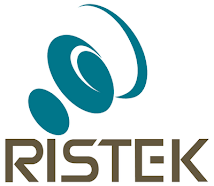Java is a programming language originally developed by James Gosling at Sun Microsystems(which is now a subsidiary of Oracle Corporation) and released in 1995 as a core component of Sun Microsystems' Java platform. The language derives much of its syntax from C and C++ but has a simpler object model and fewer low-level facilities. Java applications are typically compiledto bytecode (class file) that can run on any Java Virtual Machine (JVM) regardless of computer architecture. Java is a general-purpose, concurrent, class-based, object-oriented language that is specifically designed to have as few implementation dependencies as possible. It is intended to let application developers "write once, run anywhere." Java is currently one of the most popular programming languages in use, particularly for client-server web applications.[9][10]
The original and reference implementation Java compilers, virtual machines, and class librarieswere developed by Sun from 1995. As of May 2007, in compliance with the specifications of theJava Community Process, Sun relicensed most of its Java technologies under the GNU General Public License. Others have also developed alternative implementations of these Sun technologies, such as the GNU Compiler for Java, GNU Classpath, and Dalvik.
Contents
Java |
| Paradigm(s) | Object-oriented,structured, imperative |
|---|
| Appeared in | 1995 |
|---|
| Designed by | Sun Microsystems (now owned by Oracle Corporation) |
|---|
| Developer | James Gosling & Sun Microsystems |
|---|
| Stable release | Java Standard Edition 7 Update 1(1.7.1) (October 18, 2011; 1 day ago) |
|---|
| Typing discipline | Static, strong, safe,nominative, manifest |
|---|
| Major implementations | OpenJDK, HotSpot, many others |
|---|
| Dialects | Generic Java, Pizza |
|---|
| Influenced by | Ada 83, C++,[1] Delphi Object Pascal,[2], Eiffel [3],Generic Java, Mesa,[4]Modula-3,[5] Objective-C,[6] UCSD Pascal,[7][8]Smalltalk |
|---|
| Influenced | Ada 2005, BeanShell, C#,Clojure, D, ECMAScript,Groovy, J#, JavaScript,PHP, Python, Scala, Vala |
|---|
| OS | Cross-platform (multi-platform) |
|---|
| License | GNU General Public License / Java Community Process |
|---|
| Usual filename extensions | .java, .class, .jar |
|---|
| Website | For Java Developers |
|---|
 Java Programming at Wikibooks Java Programming at Wikibooks |
Java Programming/Design Patterns
A design pattern is not a finished design, it is a description of a solution to a common problem. A design pattern can be reused in multiple applications, and that is the main advantage of using it. It can also be seen as a template for how to solve a problem that can occur in many different situations and/or applications. It is not code reuse as it usually does not specify code, but code can be easily created from a design pattern. Object-oriented design patterns typically show relationships and interactions between classes or objects, without specifying the final application classes or objects that are involved.
Each design pattern consist of the following part:
- Problem/requirement
- To create a design pattern, we need to go through a mini analysis design and may be coding to test out the solution. This section state the requirements the problem we want to solve. This is usually a common problem that will occur in more than one application.
- Forces
- This section state the technological boundaries, that helps and guides the creation of the solution.
- Solution
- This section describes how to write the code to solve the above problem. This is the design part of the design pattern. It may contain class diagrams, sequence diagrams, and or whatever is needed to describe how to code the solution.
A design pattern can be considered as block that can be placed in your design document, and you have to implement the design pattern with your application.
Using design patterns speeds up your design and helps to communicate your design to other team members.










